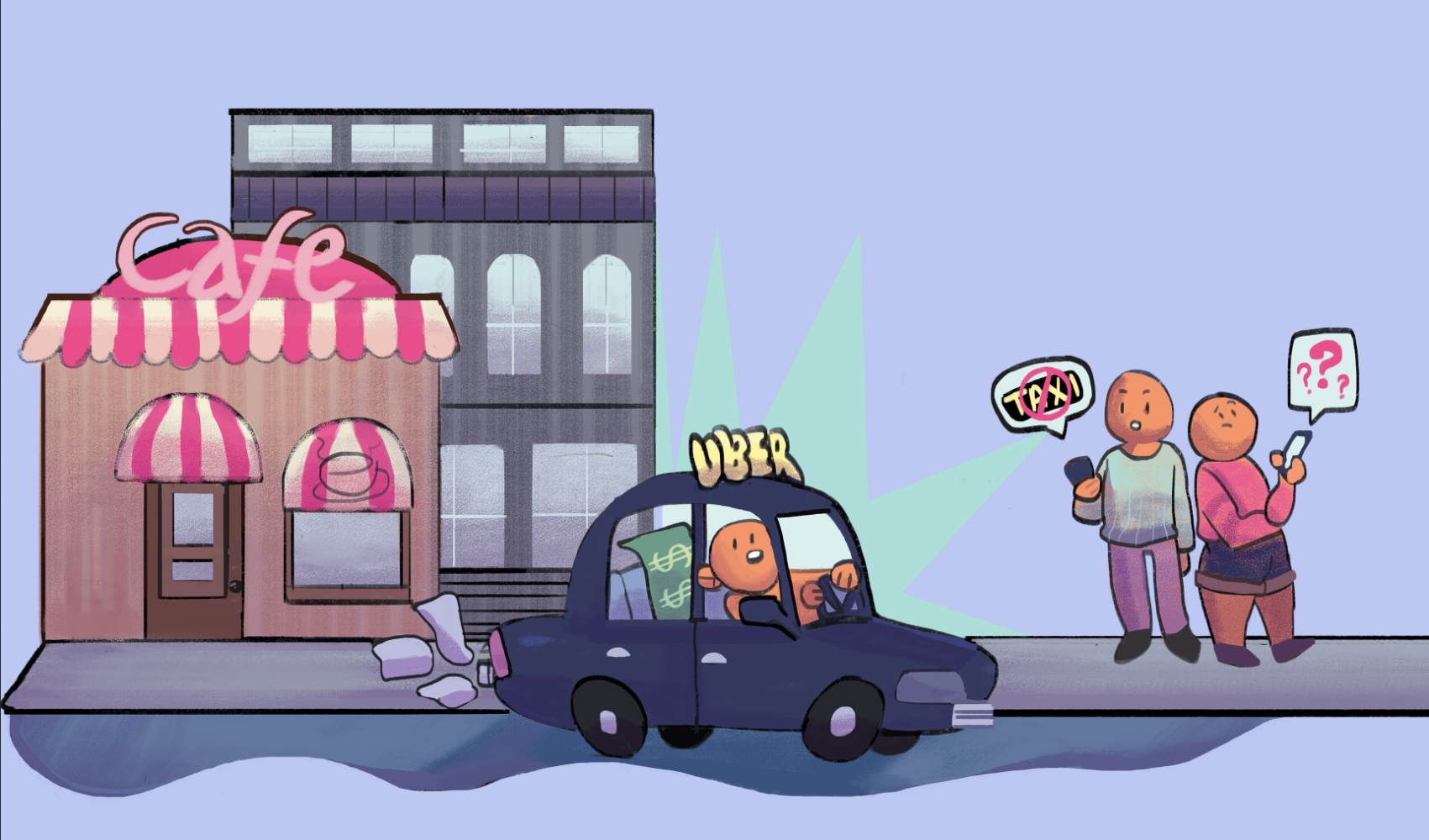It’s not hard to see why many have long anticipated
This past winter break, Davis was a production intern for “The Simpsons” in Burbank, Calif. and the existence of such ride-sharing services made it feasible for him to take the position. “I would have had very limited access to transportation during my internship if it weren’t for Lyft,” explained Davis.
He noted that while everyone’s situation may vary, the public transportation system in Los Angeles wasn’t very accessible. Taxis and cabs were available but expensive and not always close by. “I recall different instances of people in my major having an easier time finding a job than a way of getting around in LA (which is saying something),” he half-jested.
Several students like Davis already perceive ride-sharing services to have a great amount of utility. Assuming there will be a strong demand for their services, Dean James Winebrake of the College of Liberal Arts — and an expert on Transportation Sciences — wondered about the possible large-scale effects they might have on RIT.
“Access to these services might allow students to live further from campus,” he postured; as accounting for transportation isn’t as problematic as it was before. “On the other hand, students may choose to live closer to campus and use the services to access restaurants, food stores and other entertainment off campus, which currently is difficult.”
Winebrake also pondered if ultimately RIT’s campus will see some of its demands for parking alleviated if enough students are able to not need a car on campus.
Davis brought up how Uber and Lyft can fill some of the needs that RIT’s bus system does not currently meet. “RIT’s bus system is very convenient for getting around on campus and the near Henrietta area, but it is limited,” he pointed out. “For students like me who might have to spend late nights in the labs (to 3 or 4 in morning), we have to walk all the way home while completely exhausted because the buses can’t run that late.”
Overall, to both Davis and Winebrake, the arrival of such ride-sharing services meant an increased level of accessibility and flexibility when getting to and from campus.
Assurances of Service
With students now back on campus for the Fall semester, it remains to be seen if these ride-sharing services will see an increase in demand significant enough to impact both their availability and rates.
This past spring, on May 31 — about a month before the service launched on June 29 — Uber held a job fair for prospective drivers in Rochester City Hall. At that point over 4,000 people had started the application process and agreed to a background screening. When asked about how that number compares proportionally to bigger population areas like New York City, Josh Gold, a policy director at Uber, claimed that the service will have enough cars on the road prior to launch.
Additionally, he assured that Uber would have a strong enough dispersion of drivers for Rochester’s outlying suburbs as well as the entire state. “That means in Rochester, but [it] also means in Watertown, it means in the Finger Lakes and it means in the North Country,” explained Gold. “And so maybe if you’re in the Finger Lakes for a weekend you may wait seven to ten minutes for your ride, and you may be downtown you may wait two to three minutes, so there may be a little bit of a difference.”
Questions of Technologies Past
However, as Winebrake alluded to, what’s worth considering in addition to the services themselves are the possible secondary effects Uber and Lyft’s introduction could have — many of which are not quite clear yet. “We will have to wait and see how this plays out in the market,” he noted.
Corinna Schlombs, an assistant professor of History in the College of Liberal Arts, stressed that whenever new technologies are introduced (particularly on a society-wide scale) there are always unintended consequences. An expert on the history of Information and Communication Technologies, Schlombs teaches "Information Revolution." In the course, she urges students excited about the opportunities new technologies provide to think critically about the unanswered questions they pose.
“We start looking closer and closer and we see that there is lots of anticipation for all of these technologies,” Schlombs said. Being the 49th U.S. state to allow for ride-sharing services, New York has a lot of anticipation built up for ride-sharing apps.
"Some people will always expect technology to solve all of our problems and other people will always kind of be skeptical and see society going down with these."
For the latter, many voice concerns that taxis will become obsolete. There are those also concerned for the drivers; particularly their wages, conditions and treatment.
Many students are no stranger to working part-time while in school. Schlombs noted how the flexible hours of being an Uber or Lyft driver could make it a tempting alternative. Still, she mentioned
However, what Schlombs pointed out is that for the most part throughout history, neither side really ends up being completely right in these debates. During the early stages, it is far easier to develop the questions to ask about future technologies than to predict how they will pan out.








